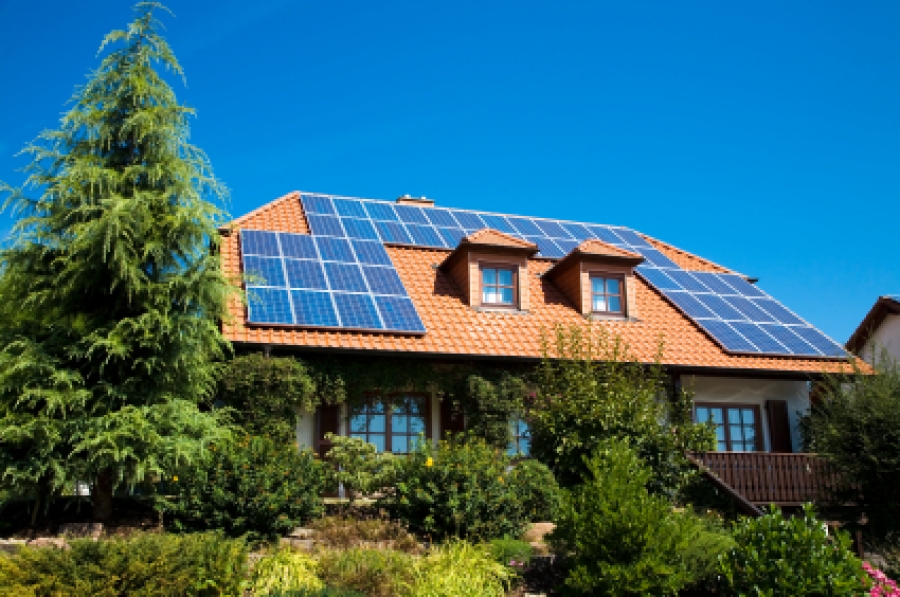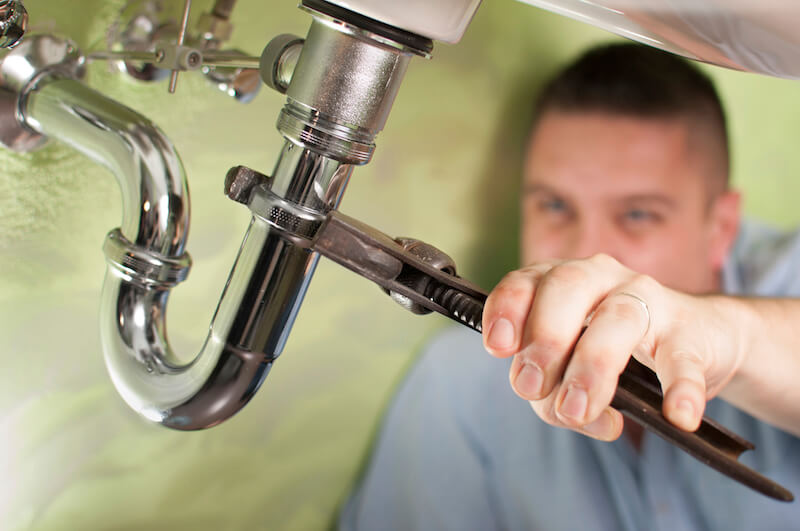Sustainable Piping Alternatives: Maximizing Your Home's Greenness
Sustainable Piping Alternatives: Maximizing Your Home's Greenness
Blog Article
We have stumbled on the article about 6 Reasons to Choose Eco-Friendly Plumbing Solutions directly below on the internet and accepted it made good sense to write about it with you in this article.

Intro
In today's globe, lasting living is becoming increasingly crucial. One location where home owners can make a significant impact is with environmentally friendly pipes remedies. By taking on eco aware techniques, families can minimize their water and energy consumption while contributing to a much healthier world.
Water-Efficient Fixtures
Traditional components commonly waste water unnecessarily. Nonetheless, contemporary low-flow toilets, taps, and showerheads are developed to minimize water use without sacrificing efficiency. These components can substantially lower household water usage, causing reduced water expenses and a minimized ecological impact.
Greywater Equipments
Greywater refers to carefully utilized water from resources such as showers, sinks, and cleaning devices. Rather than allowing this water go to waste, greywater systems reuse it for non-potable usages such as landscape watering and commode flushing. By applying a greywater system, homeowners can conserve fresh water resources and reduce strain on municipal wastewater treatment centers.
Rain Harvesting
Rain gathering includes collecting and storing rain for numerous objectives, consisting of irrigation, toilet flushing, and washing. Rainwater harvesting systems generally contain a collection surface area (such as a roofing), gutters, downspouts, and tank. By gathering rainwater, home owners can decrease their dependence on community water resources and save fresh water resources.
Solar Water Heaters
Typical water heaters count on nonrenewable fuel sources or electrical energy to heat water, contributing to carbon exhausts and energy usage. On the other hand, solar hot water heater use sunlight to warm water, using an eco-friendly and environmentally friendly alternative. By using solar energy, home owners can reduce their energy expenses and reduce their carbon footprint.
Eco-friendly Pipeline Materials
Conventional pipes materials such as copper and PVC can have negative environmental effects during manufacturing and disposal. Nevertheless, there are lasting options readily available, such as recycled steel, cross-linked polyethylene (PEX), and high-density polyethylene (HDPE). These green pipeline products supply resilience, longevity, and reduced ecological influence.
Energy-Efficient Home appliances
In addition to water-efficient fixtures, energy-efficient appliances can better minimize a family's environmental impact. High-efficiency washing machines and dishwashing machines use much less water and energy per cycle, aiding to save resources and reduced utility expenses. When shopping for home appliances, look for ENERGY CELEBRITY ® certified designs for optimal efficiency.
Smart Water Administration Equipment
Developments in technology have made it much easier than ever before to monitor and enhance water use in the home. Smart water monitoring systems make use of sensing units and information analytics to track water usage in real-time, identify leaks, and give understandings for preservation. By applying smart water management remedies, homeowners can reduce waste and make best use of performance.
Price Factors to consider
While environment-friendly plumbing options may have greater in advance expenses than traditional choices, they usually supply long-term financial savings with decreased water and power expenses. Additionally, several governments supply rewards such as rebates and tax obligation credit reports for environmentally friendly upgrades, aiding to offset first expenses.
Setup and Upkeep
Proper setup and normal maintenance are necessary for ensuring the effectiveness and durability of green plumbing systems. It is very important to work with professional professionals to install and service these systems to prevent problems and optimize performance. Regular upkeep jobs such as checking for leaks and cleaning filters can also help prevent problems and maximize efficiency.
Ecological Benefits
The environmental advantages of green pipes are significant. By conserving water and power, property owners can reduce their carbon impact and decrease their impact on natural deposits. Additionally, environment-friendly plumbing practices can assist protect ecosystems and protect biodiversity for future generations.
Wellness Advantages
Along with ecological benefits, environment-friendly pipes can additionally contribute to improved indoor air high quality and wellness. By utilizing safe products and minimizing chemical exposure, house owners can create a healthier living setting on their own and their families.
Federal government Incentives
Several federal governments supply economic incentives to encourage property owners to embrace environment-friendly pipes methods. These rewards might include discounts, tax obligation credit scores, and low-interest fundings for energy-efficient upgrades. By making use of these programs, house owners can make environmentally friendly improvements extra affordable and obtainable.
Final thought
In conclusion, green plumbing alternatives provide countless benefits for home owners and the environment alike. By investing in water-efficient fixtures, greywater systems, rainwater harvesting, solar hot water heater, green pipeline materials, energy-efficient appliances, smart water management systems, and various other lasting services, households can minimize their environmental footprint, lower their utility costs, and add to a much healthier earth for future generations.
Eco-Friendly Plumbing: Transform Your Home with Sustainable Plumbing Options
Understanding Eco-Friendly Plumbing System
At its core, eco-friendly plumbing is all about minimizing water and energy consumption in your home. It’s a green plumbing revolution changing how we think about our water supply and energy use. It offers many options for homeowners, whether you’re upgrading your home or dealing with an older home. By making these changes, you can help the environment, save money on your water and electricity bills, and create a greener, more sustainable home. So, read on to learn how to use eco-friendly plumbing solutions today.
Low Flow Fixtures: A Key to Water Conservation
One of the cornerstones of eco friendly plumbing is the use of low-flow fixtures. These fixtures, which include faucets, showerheads, and toilets, are designed to use much less water than their traditional counterparts. For instance, low-flow showerheads use significantly less water per minute than a standard showerhead without compromising the quality of your shower.
Low-flow toilets are another excellent example of water-saving options. They use fewer gallons of water per flush, making them a more water-efficient choice. By reducing your water usage, these fixtures contribute to a greener home and substantial savings on your water bills.
Maintaining an Eco-Friendly Plumbing System
Another critical aspect of eco-friendly plumbing is addressing water leaks promptly. A small water leak can waste much water over time, leading to water damage and increased water bills.
Regularly checking your plumbing system and fixing leaks can help save gallons of water and reduce your water bills.
Tankless Water Heaters: Hot Water When You Need It
Tankless water heaters, a popular choice in eco-friendly plumbing, are a revolutionary way to heat water in your home. Unlike traditional water heaters that constantly heat a tank of water, tankless water heaters operate on an on-demand basis. This means they only use energy when you need hot water, making them a more energy-efficient option.
This innovative approach to heating water can significantly reduce the energy your home uses. Traditional water heaters constantly work to keep a water tank heated, which requires much energy. In contrast, tankless water heaters heat water when needed, reducing energy consumption and saving money on energy bills. This is a great way to make your home more eco-friendly and embrace an eco-friendly lifestyle.
Insulating Water Pipes: Maximizing Energy Efficiency
Insulating your water pipes is another effective method in eco-friendly plumbing. Proper insulation can prevent heat loss, ensuring your hot water remains hot as it travels from your water heater to your faucet or showerhead. This means your water heater won’t have to work as hard to heat the water, thus saving energy.
For instance, insulating your water pipes can further enhance energy efficiency if you’re using a tankless water heater, which heats water only when needed. This is because the insulation reduces the heat lost as the hot water travels through the pipes, meaning the heater uses less energy to bring the water to the desired temperature.
Dual Flush Toilets: A Water Saving Option
Dual flush toilets are another excellent eco-friendly plumbing option that can help you save water. These toilets offer two flush options: one for liquid waste and one for solid waste. The liquid waste option uses less water than solid waste, allowing you to choose the water flow for each flush based on your needs.
Using less water for liquid waste, dual flush toilets can save thousands of gallons per year compared to traditional bathrooms. This can lead to significant savings on your water bills and contribute to a more sustainable and eco-friendly home.
Touchless Faucets: Saving Water With a Wave of Hand
Touchless faucets are a modern, eco-friendly plumbing option that can help reduce unnecessary water use. These faucets use motion sensors to turn on and off, meaning they only use water when you need it.
This can be particularly useful in the kitchen, where your hands might be full or dirty. Instead of leaving the water running while you handle food or clean dishes, the faucet will only run when your hand comes near the sensor. This reduces water flow and helps you use less water than traditional faucets, contributing to a more eco-friendly lifestyle.
Eco-Friendly Pipes: Eco-Friendly Plumbing Options
When considering eco-friendly plumbing options, paying attention to the materials used in your plumbing system is essential. Some pipes, like those made from copper or stainless steel, are recyclable and more environmentally friendly than PVC pipes. Choosing eco-friendly materials for your pipes can reduce your home’s environmental impact and create a more sustainable plumbing system. By making these small changes, you can make a big difference in your home’s eco-friendliness.
Eco-Friendly Plumbing: Make Your Home Greener
Switching to eco-friendly plumbing options can have a significant positive impact on the environment and your wallet. Not only can these changes reduce your water and energy consumption, but they can also help prevent water waste and damage, contributing to a healthier planet.
Eco-friendly plumbing is more than just a trend; it’s a lifestyle change contributing to a more sustainable future. By making these changes in your home, you can help the planet while saving money on your water and energy bills.
https://intownplumbingtx.com/articles/eco-friendly-plumbing/

I found that post about while doing a lookup on the web. Make sure you pause to share this article if you enjoyed reading it. We thank you for your readership.
About Report this page